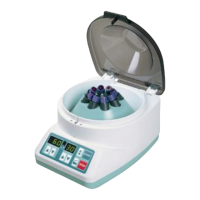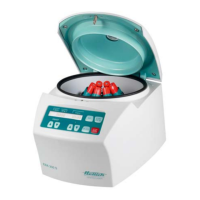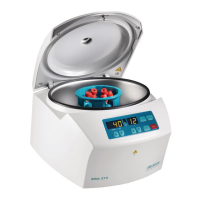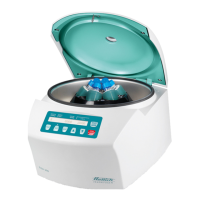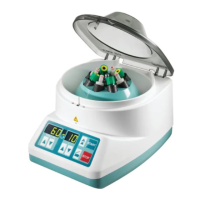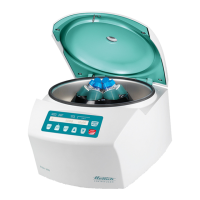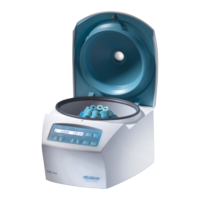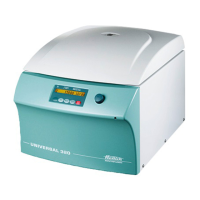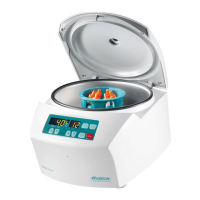7/42
• The 5 Volt interface with three wires is transferred to a RS 485 interface with two
wires.
Interface for the frequency converter: RS 485 interface via two wires
• Transmitting the main enable signal (= Hardware STOP) control panel ⇒ frequency
converter
• Transmitting the error line (= FC-ERROR) frequency converter ⇒ control panel
3.3 Frequency converter (A2)
The frequency converter carries out the following tasks:
• Generating the motor current supply
(three-phase current with variable frequency and voltage)
Functional description: The supply voltage is rectified, smoothened and
chopped into a pulse width pattern in three bridge
elements with a microprocessor.
• Monitoring the motor current
• Evaluating the overtemperature switch in the motor (only 115V version)
• The braking chopper transfers the electrical energy produced during braking, in the
230 V version from a voltage of approx. 390 Volt and in the 115 V version from a
voltage of approx. 200 Volt, to the brake resistor in a controlled manner.
• SLAVE behaviour (the requests and commands of the control panel are transmitted
via the serial interface):
RS 485 Volt interface with two wires
(10-pole flat ribbon cable, pole 3 and 5)
• Evaluating the main enable signal (= Hardware STOP) for the frequency converter
(10-pole flat ribbon cable, pole 7)
• Evaluating possible errors and handling the error line (= FC-ERROR)
(10-pole flat ribbon cable, pole 4)
• The following are defined by the control panel via the serial interface:
− Speed
− Starting and brake levels
− Control commands START, BRAKE, STOP
• LED status displays:
In the standby status the green LED illuminates
In the run status the green LED illuminates
In the error status the green LED flashes
If the frequency converter processor detects an error, it switches off automatically and
sets the error line (FC-ERROR). Then the control panel inquires the type of error via the
serial interface.

